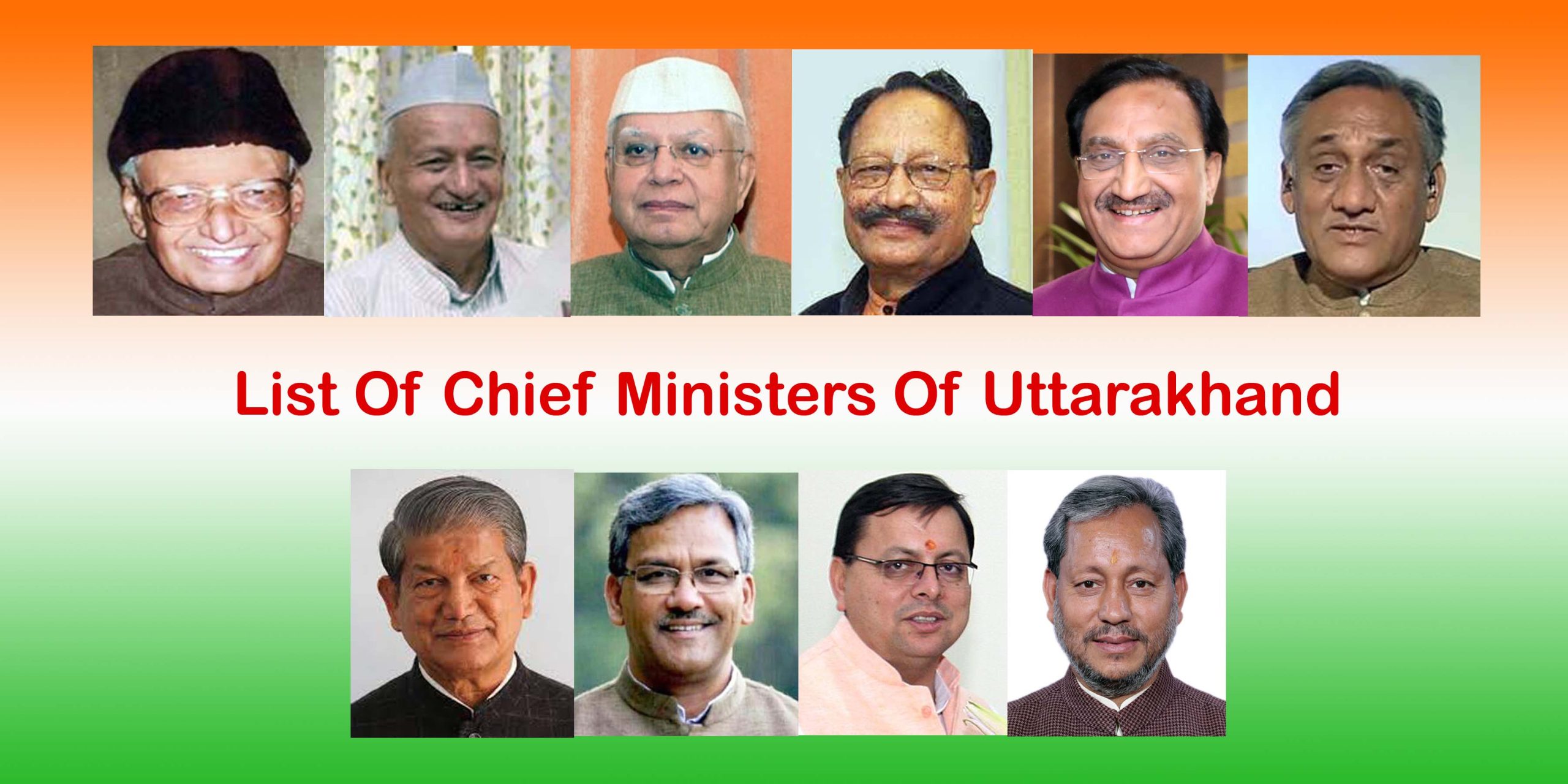
A Journey of Chief Ministers of Uttarakhand Since Independence
Since becoming its state on November 9, 2000, Uttarakhand, once called Uttaranchal, has had a vibrant political scene shaped by its Chief Ministers. Each has brought something special, tackling unique challenges and paving the way for the state’s growth and long-term success. In A Journey of Chief Ministers of Uttarakhand Since Independence, what each Chief Minister has done and how they’ve helped Uttarakhand grow and change. So, this list of Chief Ministers has taken turns guiding Uttarakhand through ups and downs, making big moves to help it develop, face tough times, and evolve.
In A Journey of Chief Ministers of Uttarakhand Since Independence, we will examine these leaders more closely, discussing the major projects they undertook, the obstacles they encountered, and their lasting impacts on the state. Let’s dive into the stories of these remarkable leaders and see how they’ve helped shape Uttarakhand into what it is today.
A Journey Through Leadership: Uttarakhand Chief Ministers Since 2000
Nityanand Swami (2000-2001)
In a Journey of Chief Ministers of Uttarakhand Since Independence, Nityanand Swami was Uttarakhand’s first Chief Minister. He guided the state through its early days after its formation from Uttar Pradesh in 2000. He was instrumental in developing the new state’s administrative and governance frameworks, tackling the challenges of establishing a distinct identity and guaranteeing a seamless transition.
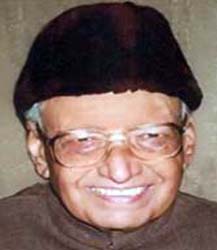
Key Contributions:
- He established the essential administrative system that allowed Uttarakhand to operate as its state.
- He also started the first major projects to build roads, schools, and healthcare centers, addressing the state’s specific geographic and community needs.
- In addition, he introduced plans to boost tourism and use the state’s natural resources wisely and sustainably.
Challenges:
- He had to build a new government and administration system in an area with various people and challenging landscapes.
- After forming the state, he met the local people’s hopes for more development and jobs.
- Despite their different challenges, he ensured fair development for the state’s mountainous and flat parts.
Legacy: People remember Nityanand Swami’s crucial role in founding Uttarakhand as an independent state. So, his groundbreaking efforts to create the state’s administrative framework and focus on building its infrastructure have laid the groundwork for its ongoing growth and future development projects.
Bhagat Singh Koshyari (2001-2002)
Bhagat Singh Koshyari became the Chief Minister of Uttarakhand soon after its creation. He guided the state through its early days, focusing on building upon the initial work done by his predecessor and enhancing the young state’s governance and development processes.
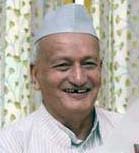
Key Contributions:
- He improved Uttarakhand’s governance and made its administration more efficient, adding to the groundwork laid by the first Chief Minister.
- He concentrated on growing infrastructure projects, such as building roads, schools, and healthcare centers, to better connect people and enhance services.
- He also implemented policies to strengthen the local economy, giving special attention to farming, tourism, and small businesses. So, these policies helped create jobs and encouraged sustainable growth.
Challenges:
- He tackled the tough job of running a new state with a mix of different landscapes and cultures.
- He worked to fix the development gaps between the mountain areas and the flatlands, ensuring the whole state grew evenly.
- After becoming a separate state, he had to manage the people’s expectations for quick progress and better living standards.
Legacy: People remember Bhagat Singh Koshyari for solidifying Uttarakhand’s administrative structure and developing its course. His work improving infrastructure, boosting local economies, and tackling the state’s specific challenges has helped Uttarakhand become a developed and self-reliant state.
N. D. Tiwari (2002-2007)
N. D. Tiwari became Uttarakhand’s Chief Minister and guided the state through critical development stages right after its formation. His tenure featured significant advances in creating a comprehensive plan for the state’s social and economic growth, leveraging his vast governance experience.
Key Contributions:
- He grew the state’s administration and governance to make it work better and respond faster.
- He strongly advocated building roads, schools, hospitals, and irrigation systems to boost the economy and improve people’s lives.
- In addition, he started various welfare programs to help the less fortunate, increase job chances, and boost development in rural areas.
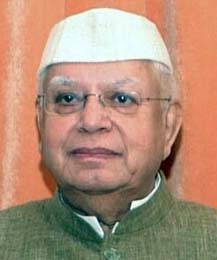
Challenges:
- He navigated the tricky task of managing a brand-new state with a mix of different landscapes and economic situations.
- After gaining statehood, he tackled the people’s high hopes for quick progress and better governance.
- He ensured sustainable development, protecting the state’s natural resources and cultural heritage.
Legacy: People celebrate N. D. Tiwari’s time in office for his all-encompassing strategy that fostered Uttarakhand’s growth and progress. His forward-thinking leadership and commitment to improving the state’s infrastructure, social welfare, and administrative strength. So, they have made a lasting mark, greatly aiding Uttarakhand’s evolution into a dynamic and forward-moving state.
B. C. Khanduri (2007-2009, 2011-2012)
B. C. Khanduri served as Uttarakhand’s Chief Minister at a critical time, working on improving the government and infrastructure. He took a crucial role in updating the state and addressing the diverse needs of its population.
Key Contributions:
- He made the state’s administration and governance stronger, focusing on making things more transparent, accountable, and efficient when delivering services to the public.
- He also focused on improving infrastructure, such as roads, bridges, and public buildings, to facilitate more accessible travel and boost economic growth.
- He emphasized programs aimed at helping the less fortunate, improving education, and enhancing healthcare, all aimed at boosting the quality of life for people across the state.
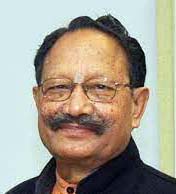
Challenges:
- He tackled the lack of infrastructure and uneven development across the state, focusing primarily on remote and mountainous regions.
- He addressed environmental issues while advocating for new infrastructure, ensuring sustainable growth in an ecologically sensitive state.
- He balanced the need for quick development against the budget limits of a new state, making the best use of available resources.
Legacy: People remember B. C. Khanduri’s dedication to good governance and development. He boosted the state’s infrastructure and pushed for governance reforms, building a solid foundation for Uttarakhand’s advancement. So, his legacy shines through in the better infrastructure and governance practices pushing the state towards sustainable growth.
Ramesh Pokhriyal ‘Nishank’ (2009-2011)
Ramesh Pokhriyal ‘Nishank’ was Uttarakhand’s Chief Minister. He led the state through an essential phase of change and growth, concentrating on reforming education, protecting the environment. Also building infrastructure to make Uttarakhand a top Indian state for development and sustainable living.
Key Contributions:
- He made significant educational changes to improve it, including setting up new universities and technical schools to make higher education more accessible.
- He strongly emphasized protecting the environment and starting programs to save Uttarakhand’s natural resources. He encouraged tourism and development that didn’t harm the planet.
- He also pushed forward projects to build better infrastructure, focusing on improving roads, the water supply, and healthcare to improve people’s lives and help the state’s economy grow.
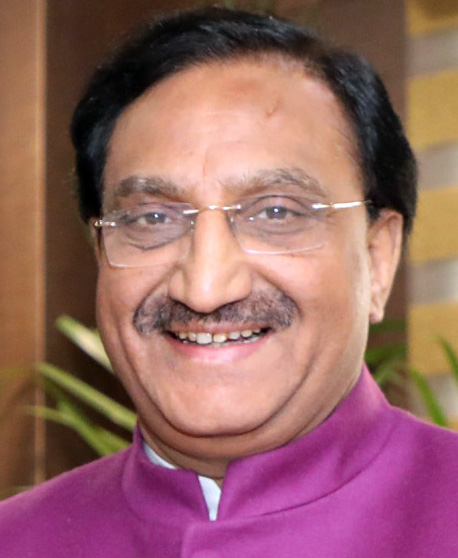
Challenges:
- He worked to meet the growing demands for education and infrastructure in a state filled with rugged mountain landscapes.
- He aimed to grow the economy without hurting the environment, a big task in a state famous for its delicate ecosystems and popular for religious and eco-tourism.
- He effectively implemented development projects and environmental policies while facing administrative and budget challenges.
Legacy: People remember Ramesh Pokhriyal ‘Nishank’ for his commitment to enhancing education, protecting the environment, and improving infrastructure in Uttarakhand. His work to balance development and environmental protection has made a lasting difference in how the state grows, achieving significant progress in education and environmental care and setting the stage for future projects.
Vijay Bahuguna (2012-2014)
Vijay Bahuguna was Uttarakhand’s chief minister during a critical development phase. The state faced significant challenges and growth opportunities. Natural disasters tested his leadership, yet he initiated important projects to strengthen the state and improve its infrastructure.
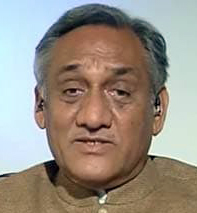
Key Contributions:
- He took steps to improve disaster management and response after the terrible floods 2013, preparing the state for future natural disasters.
- He concentrated on fixing and upgrading infrastructure hit by the floods, like roads, bridges, and public services, to get things back to normal and help recover.
- He also started welfare programs to help people impacted by the floods, ensuring they had access to healthcare, education, and chances to earn a living and rebuild their lives.
Challenges:
- He coordinated with different government levels and non-government organizations. He handled the immediate and ongoing recovery after one of the state’s worst natural disasters.
- He balanced the rush to rebuild and develop quickly with the need to build things to last and withstand future disasters.
- He looked at the organizational and economic needs of people hit by the disaster, focusing on their rehabilitation, finding them jobs, and providing psychological support.
Legacy: People remember Vijay Bahuguna’s strong leadership and resilience during natural disasters. His efforts to improve disaster preparedness and infrastructure, alongside his commitment to social welfare, facilitated Uttarakhand’s path to recovery and sustainable development.
Harish Rawat (2014-2016, 2016-2017)
Harish Rawat led Uttarakhand as Chief Minister for two terms, a time filled with political ups and downs and governance challenges. Despite these obstacles, he pushed for development, protected the environment, and launched social welfare programs to strengthen the state and ensure everyone could benefit from its growth.
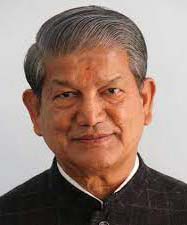
Key Contributions:
- He improved the state’s governance and administration by bringing in reforms to make government work smoother and enhance services for the public.
- He also focused intensely on sustainable growth, initiating projects to save the environment and encourage tourism and farming that don’t harm nature. These are both key to the state’s economy and natural harmony.
- He pushed forward with infrastructure work, improving roads, healthcare, and schools to make it easier for people to get around and enhance the quality of life in Uttarakhand.
- Additionally, he rolled out programs to help those in need, paying extra attention to health, education, and job chances to help lessen poverty and close the gap between different social groups.
Challenges:
- He steered the state through political turmoil, ensuring the government remained stable despite often changing leaders and administrative hurdles.
- He worked to grow the economy while protecting the environment, a tough job in a state that frequently experiences natural disasters and highly values its natural surroundings.
- He tackled the uneven development between cities and the countryside, ensuring everyone in the state had fair access to resources and chances.
Legacy: In Uttarakhand, people remember Harish Rawat for advocating sustainable growth, better governance, and social welfare. Even with significant political and administrative obstacles, his work protecting the environment, building infrastructure, and enhancing social welfare has set the stage for the state’s continued development and strength.
Trivendra Singh Rawat (2017-2021)
Trivendra Singh Rawat was in charge as Uttarakhand’s Chief Minister, a time filled with significant changes and improvements. He concentrated on running a good government, keeping the environment safe, and growing the economy, all to boost the state’s reputation across the country.
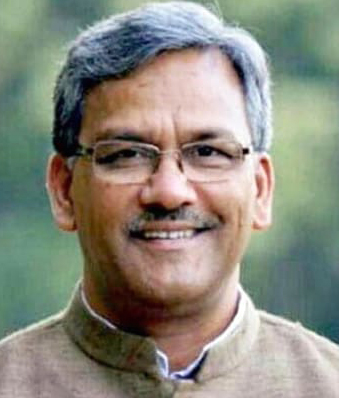
Key Contributions:
- He improved state management by introducing rules to clarify processes, reduce corruption, and enhance government services.
- He put a lot of effort into building the infrastructure, taking on big projects like making roads, setting up healthcare centers, and starting schools to make getting around and accessing services easier.
- In addition, they advocate for environmental safety, initiating efforts to save forests, revive rivers, and encourage travel that doesn’t harm nature to preserve Uttarakhand’s beautiful natural spots.
- He also worked on improving the economy by helping with farming, gardening, and starting small and medium-sized businesses to create more jobs and better ways to make a living.
Challenges:
- He tackled environmental and growth issues in the state’s delicate ecosystem, like handling natural disasters and climate change risks.
- He ensured development was even across Uttarakhand, from the hard-to-reach mountain areas to the easier-to-get-to flatlands, each with different development goals and needs.
- He worked on improving people’s lives in the state, including health, education, and job chances, as people wanted better services and more opportunities.
Legacy: People remember Trivendra Singh Rawat’s dedication to running a good government, pursuing sustainable growth, and boosting the economy. His work to improve government services, safeguard the environment, and encourage economic ventures has established a strong base for Uttarakhand’s future progress. It is a model for strong leadership and policy execution in the state.
Tirath Singh Rawat (2021)
Tirath Singh Rawat served briefly as Uttarakhand’s Chief Minister in 2021, stepping in when the state faced enormous challenges like the global pandemic. Despite his brief tenure, he focused on guiding the state through these tough times while keeping an eye on development and welfare.
Key Contributions:
- He fought the COVID-19 pandemic by improving healthcare facilities, doing more tests, and starting vaccine drives to protect people.
- Additionally, he kept focusing on improving the economy and people’s well-being by building better infrastructure, such as roads and improved healthcare and schools.
- He also started and pushed for programs to help people in need, offering financial help to those hit by the pandemic and creating more chances for jobs and making a living.
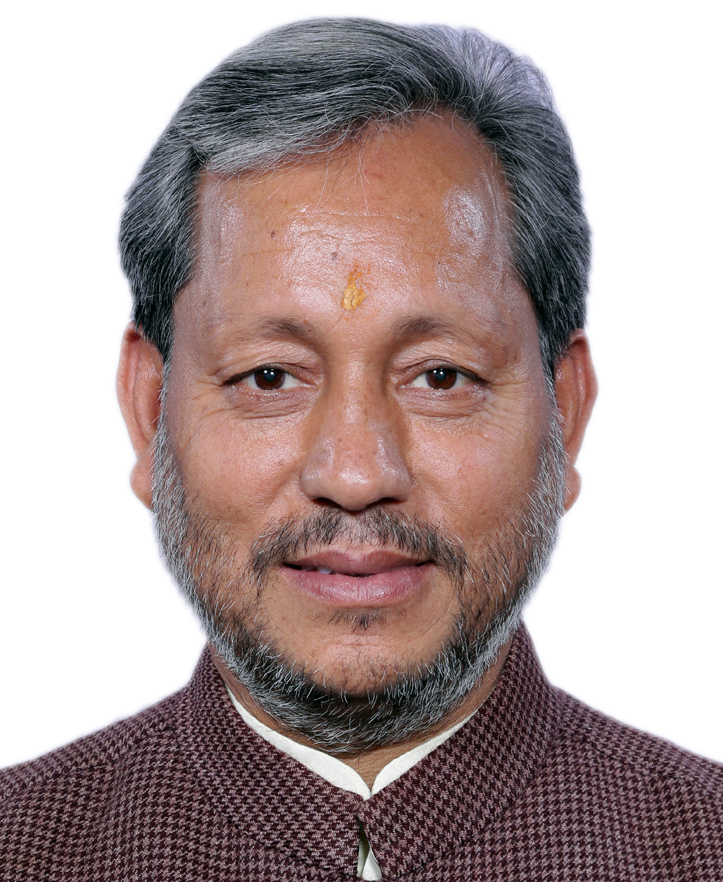
Challenges:
- He handled the health emergency caused by COVID-19 by ensuring enough healthcare services, addressing the economic impact, and reducing the effects on the state’s tourism.
- He balanced the urgent need to handle the pandemic with the state’s future goals like building infrastructure and protecting the environment.
- He focused on meeting people’s social and economic needs during the crisis, ensuring that help and relief reached those who needed it quickly and effectively.
Legacy: Even though Tirath Singh Rawat was Chief Minister briefly, people remember him for his bold steps to tackle the COVID-19 pandemic and keep Uttarakhand’s development on track. So, his leadership in a tough time helped steer the state through difficulties, setting up a foundation for its recovery and strength.
Pushkar Singh Dhami (2021-Present)
In 2021, Pushkar Singh Dhami took over as Uttarakhand’s Chief Minister amid challenges, including the COVID-19 pandemic and the drive for continuous economic and social advancement. His time in office marks a fresh phase in Uttarakhand’s story, focusing on creative leadership, digital changes, and development that includes everyone.
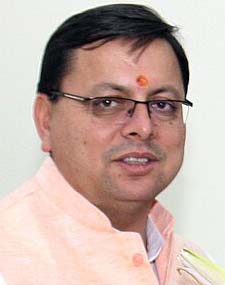
Key Contributions:
- He focused on using digital tools and new technologies to make government work smoother and improve services for people, aiming to make governance easier to access and more efficient.
- He also prioritized building infrastructure like roads, internet access, and healthcare centers to boost the economy and improve people’s lives.
- Additionally, he introduced wide-ranging programs to help different social groups, paying extra attention to health and education, empowering women, and creating jobs for young people. His goal was to make society more inclusive and fair.
Challenges:
- He continued to handle the ongoing issues related to the COVID-19 pandemic, including healthcare problems, economic recovery, and the rollout of vaccines.
- He worked on sustainable growth while caring for the environment, especially by wisely using natural resources and tackling the effects of climate change.
- He aimed to close the development gap between cities and the countryside and ensure that everyone in the state had fair access to resources, opportunities, and services.
Legacy: Pushkar Singh Dhami’s tenure, which is still in progress, stands out for his dedication to using technology in governance. He aims for sustainable and inclusive growth and meeting Uttarakhand’s immediate and future needs. His leadership defines how Uttarakhand tackles today’s challenges, striving to make the state a beacon of innovation, resilience, and forward-thinking governance in India.
Conclusion:
The history of Uttarakhand’s Chief Ministers shows a wide range of leadership styles and development strategies. So every leader has faced unique challenges in A Journey of Chief Ministers of Uttarakhand Since Independence. It made exceptional contributions in guiding Uttarakhand on its path to growth, strength, and lasting progress. As Uttarakhand moves forward, the impact of its past leaders will continue to inspire and guide its future growth and leadership.
On Postswirl blogging site, a Journey of Chief Ministers of Uttarakhand Since Independence, take a closer look at their achievements: the hurdles they faced and the difference they have made in bringing the state forward.




